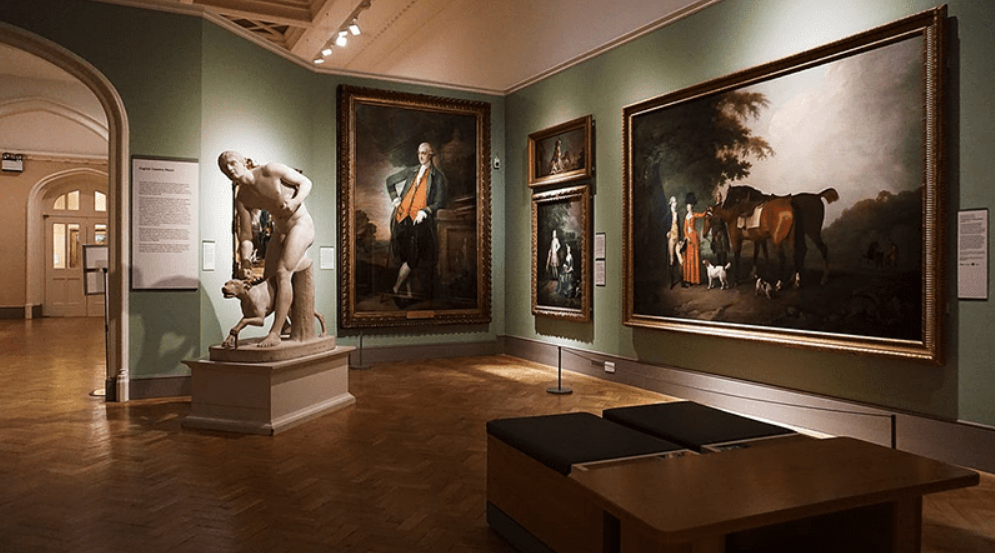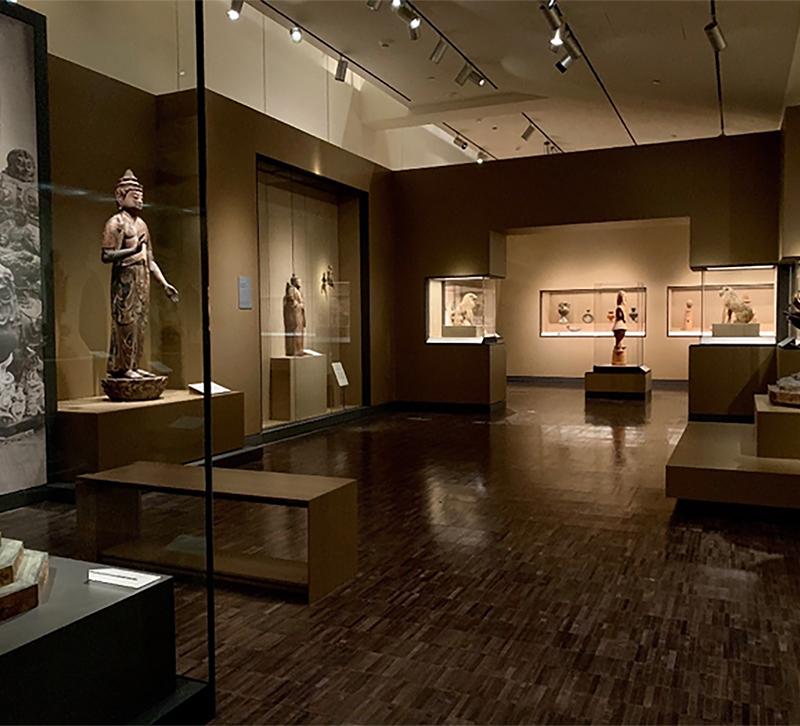Proper lighting in museums can help highlight objects and create an enjoyable visiting experience. Using various museum lighting techniques and paying attention to safety principles and the protection of displayed items can improve the quality of exhibitions and visitor satisfaction. By employing direct lighting to highlight specific details, indirect lighting to create a soft and even illumination, and background lighting to create contrast, objects can be displayed in the best possible way. Additionally, dynamic lighting with changes in light intensity and the use of moving lights can create interactive and engaging experiences for visitors. All these principles and techniques can help create a suitable and attractive environment in museums and provide a unique experience for visitors.

Features of Exhibit Hall Lighting in Museums
Lighting in the exhibit hall of a museum should be designed to enhance the visitor experience and highlight the displayed objects in the best possible way. Here are some key features of museum lighting:
1. Emphasis on Displayed Objects
Lighting should be such that it draws visitors’ attention to the objects and clearly shows their details. Using direct and focused lights to highlight specific objects can be effective.
2. Maintaining Suitable Environmental Conditions
Sensitive objects should be protected using gentle and controlled lighting. Lighting should not damage these objects and should help maintain them in optimal conditions.
3. Creating Variety in Lighting
Using a combination of direct, indirect, and background lighting can make the exhibition space more attractive and create suitable contrast. Moving and dynamic lights can also make the visitor experience more interactive.
4. Using Advanced Technologies
New lighting technologies such as LEDs and smart control systems can help achieve more precise and economical lighting. These technologies can also help reduce energy consumption and increase lamp lifespan.
5. Color and Temperature of Light
Choosing the right color and temperature of light can significantly impact the visitor experience. Warmer lights can create a cozier atmosphere, while cooler lights can create a more modern and scientific ambiance.
6. Stability and Compatibility
Lighting should be stable and adjustable to ensure minimal changes in brightness and light quality over time. Using durable and resistant equipment can help maintain lighting quality.

The Impact of Light on the Health of Artworks
Light can have various effects on the health of artworks. Strong and continuous light, especially UV light, can cause color changes and deterioration of the colors used in artworks. Additionally, such light can damage different materials such as paper, fabric, and paints, leading to brittleness and degradation. Reducing physical resistance and creating unfavorable conditions for preserving artworks are other negative effects of light. To mitigate these damages, UV protective glass, gentle and controlled lighting, and limiting the exposure time can be used. These measures can help preserve the health and longevity of artworks and prevent their deterioration.
Principles of Lighting Design in Museums and Galleries
Designing lighting in museums and galleries is very important because it can improve the visitor experience and help preserve artworks. By adhering to design principles, it is possible to create a suitable and attractive environment in museums and galleries and help better preserve and display artworks. The principles of lighting design include the following:
- Emphasis on Displayed Objects: Lighting should draw visitors’ attention to the objects and clearly show their details.
- Maintaining Suitable Environmental Conditions: Using gentle and controlled lighting to protect sensitive objects from light exposure is essential.
- Variety in Lighting: Using a combination of direct, indirect, and background lighting to create an attractive space and suitable contrast.
- Using Advanced Technologies: Utilizing technologies like LED and smart control systems for precise and economical lighting.
- Choosing the Right Color and Temperature of Light: Selecting warmer or cooler lights depending on the type of artworks and the atmosphere you want to create.
- Stability and Compatibility: Using durable and long-lasting equipment to maintain light quality over time.

Suitable Lighting Sources for Museums and Galleries
For museums and galleries, suitable lighting sources should be carefully selected to ensure the comfort and safety of the environment. Some commonly used lighting sources include:
- Light Curtains: These curtains can help provide adequate illumination for the exhibition and prevent direct sunlight.
- LED Lights: LED lights are suitable for exhibitions due to their low energy consumption and long lifespan.
- Digital Light Curtains: These curtains allow for the adjustment of brightness and color, making them suitable for diverse exhibitions.
- Central Lights: For exhibitions that require uniform illumination, central lights can be the best option.
Advantages of Using LED Equipment in Museum Lighting
Using LED equipment in museum and gallery lighting has numerous advantages. These devices are an economical and environmentally friendly option due to their high efficiency and energy savings. The long lifespan of LEDs reduces the need for frequent replacements and lowers maintenance costs. Additionally, the low heat production of LEDs prevents damage to artworks and allows for precise adjustment of light intensity and color to better display the pieces. Moreover, LEDs are durable and reliable, produce a wide range of colors with high accuracy, and do not emit harmful UV and IR radiation, which helps in better preserving and maintaining artworks. These combined advantages make LED equipment the best choice for museum and gallery lighting.
Final Words
Proper lighting in museum exhibit halls can help improve the visitor experience and highlight the displayed objects in the best possible way. Paying attention to the mentioned features can lead to the creation of a suitable and attractive lighting environment in museums. Shamim Andisheh Company, with years of experience and successful museum lighting projects, is the best choice for selecting and executing museum and gallery lighting projects. Contact us for consultation.

 English
English العربية
العربية

















